Chordeumatida key
Tasmanian Chordeumatida are small millipedes living mainly in forest litter. They are often first detected in an area when the catches from pitfall traps are examined. So far 11 species have been described, all endemic to Tasmania, although other species in some of the genera also occur on the Australian mainland (Australeuma in Victoria and WA, Neocambrisoma in NSW, Peterjohnsia in Queensland and Reginaterreuma in Queensland and Victoria). There are at least two undescribed species: a locally abundant Nesiothrix in the northwest, and an uncommon Neocambrisoma (?) in the Southern Forests.
To positively identify a chordeumatidan to species you need to dissect out the very tiny gonopods of a mature male and examine them under high magnification. The key below will take you a fair way along the path to a species identification, then you can check the gonopod illustrations and other information on the species page. Although females and juveniles cannot be positively identified, tentative identifications are often possible based on the general appearance of the specimen and an accurate location for the spot where it was collected.
|
1a. Prominent lateral extensions (paranota) on body segments ('p' in top view on right)
|
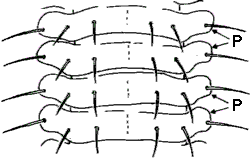 |
|
1b. Paranota inconspicuous
|
|
|
2a. Body gray; paranota usually pale white or pinkish
|
 |
|
2b. Body pale yellow, with or without dark brown patterning
|
|
|
3a. Body pale yellow (sometimes with dark brown patterning); paranota extending straight out from sides; the 6 dorsal setae on each segment long and obvious
|
 |
|
3b. Body pale yellow with dark brown patterning; paranota deflected downwards at about 45° from the horizontal; dorsal setae inconspicuous
|
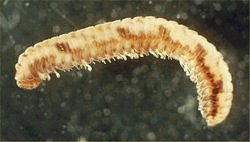 |
|
4a. Very pale in colour, with or without darker bands running around the whole of each segment (as pictured right)
|
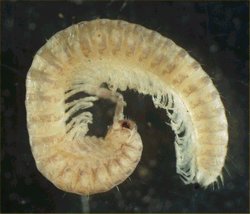 |
|
4b. Light to dark brown in colour, often with darker patches
|
|
|
5a. Adult more than 15 mm long; the most lateral segmental seta on prominent, light-coloured knob; legs pale with darker banding
|
 |
|
5b. Adult less than 10 mm long; the most lateral seta not on prominent, light-coloured knob; legs not banded
|
|
|
6a. Usually light brown with mid-dorsal band of darker brown; the most lateral seta on each segment curved slightly upwards
|
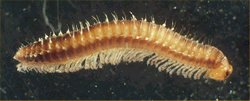 |
|
6b. Usually light brown with mid-dorsal line of darker dots; the most lateral seta on each segment curved downwards
|
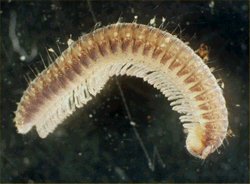 |
